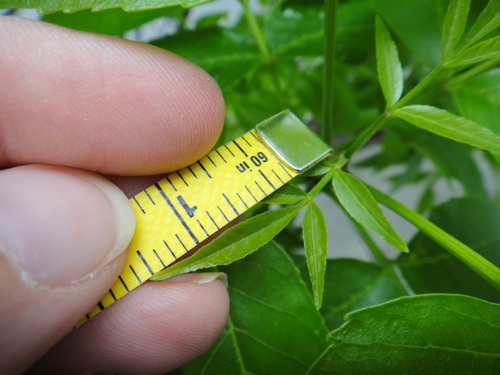The Smallest Leaf
 In
The Biggest Leaf
we showed that at the upper range of leaf size, things reach a point where the energy supplied by large leaves is outweighed by the energy required to maintain them.
In
The Biggest Leaf
we showed that at the upper range of leaf size, things reach a point where the energy supplied by large leaves is outweighed by the energy required to maintain them.
Past this point, it doesn't make much sense to further increase leaf size, and so, trees don't. On the other end of the spectrum, the tradeoff is of a different character.
Fluid passing down a given osmotic potential will acquire a greater or smaller flow rate depending on how much surface area is allowed for the fluid to pass the gap. The problem with short leaves is that they present such a small surface area that the fluid doesn't gain much of a flow speed as it descends the osmotic potential.
As a result, the leaves dissipate so much pressure that hardly any is left to drive the sap through the stem.
The flow can become so slow in fact that it even fails to outperform molecular diffusion over distance relevant to sap flow. What would a relevant distance of transport be? As a lower bound, we can say that the plant would have little use for a vascular system that failed to transport molecules across a single sieve cell more quickly than diffusion would manage, , which we calculated in Diffusive flow .
At what leaf length (in cm ) does the vascular system fail to outcompete molecular diffusion in a tree of height 35 m ?
Recall,
Assumptions
- 20 m
- m/s/Pa
- Pa
- Pa/s
The answer is 2.666.
This section requires Javascript.
You are seeing this because something didn't load right. We suggest you, (a) try
refreshing the page, (b) enabling javascript if it is disabled on your browser and,
finally, (c)
loading the
non-javascript version of this page
. We're sorry about the hassle.
0 solutions
No explanations have been posted yet. Check back later!